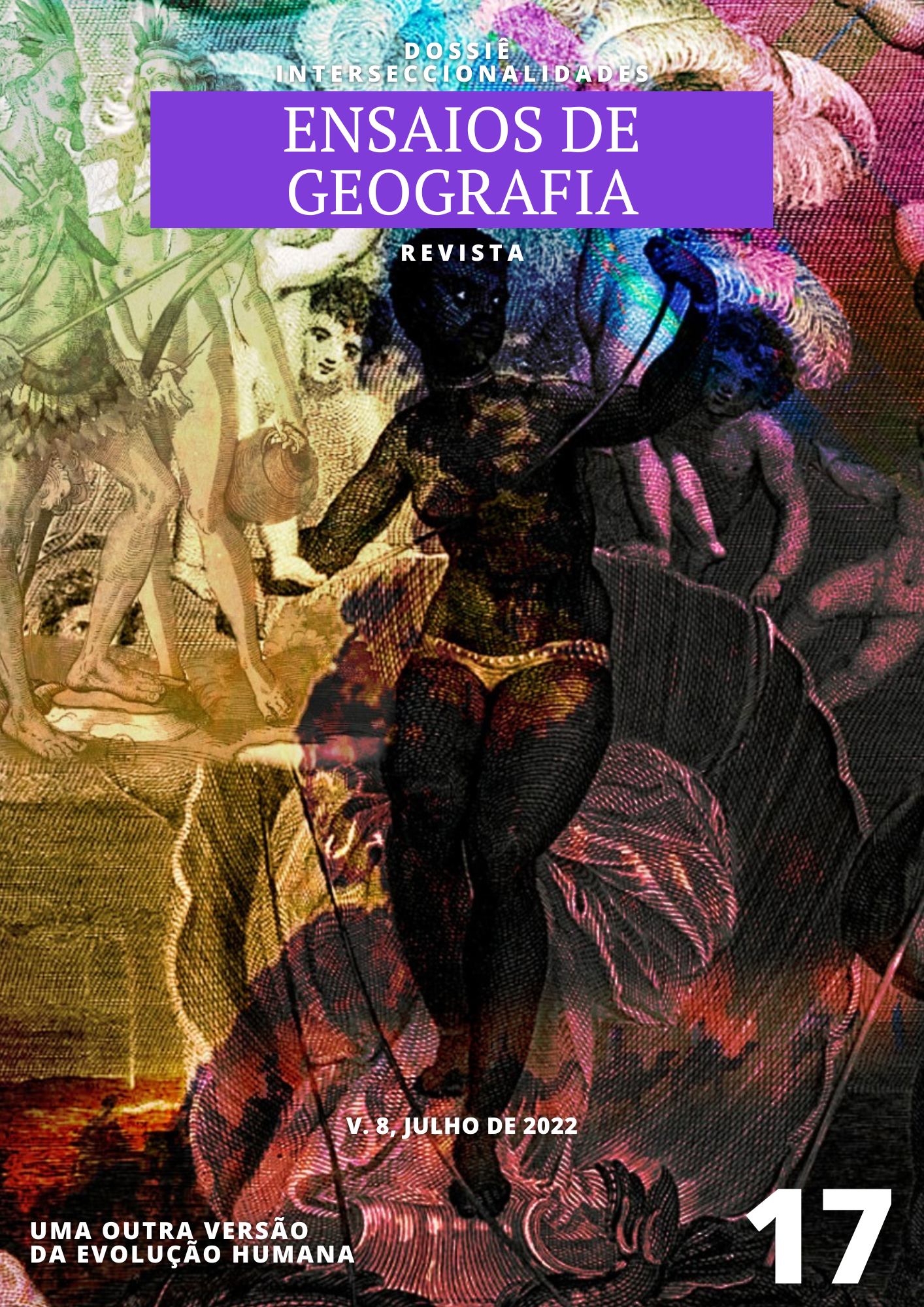Vol. 8 No. 17 (2022): Dossiê Intersectionalities: between knowledges and spaces

COVER
Another version of human evolution
Laleska Freitas
Intersectionality: when I think of this concept visually I always understand it as a meeting of water, that's why I started this creation with the meeting of the Negro and the Solimões rivers, which generates the famous Amazon. This meeting is the filter on the other illustrations that make up this final artwork.
Other processes led me to find the other parts of the whole. In the search for a female version of the Venusian man, at first to reconstruct the image of modern perfection, I found the black Venus (symbolic?). Faced with this beautiful Venus, however, my plans changed and I began to represent the water encounters that form humanity. Look for images of human evolution, of our species: it is always white men walking towards the future. With the artwork that is on the cover of this dossier I wanted to show other facets of our human evolution, the ones that contributed so much for us to have this socio-spatial composition today.
Provoking the West, I use an image of a pilgrimage through the desert referring to the Arabs of North Africa to signify both this evolutionary path and the Arab contribution to Western pillars - after all, we would not even have records of many ancient philosophers without the preservation of this knowledge by the Arabs. This element of art also symbolizes the contribution of the East to Western thought, which did not come because a Westerner found a box with a Jinn in it and did not kill it, but rather made a request of it. Here we sought to represent the East without Orientalism (or colonialism).
The indigenous peoples were represented, also contributing to human evolution. An illustration of the Tupinambá indigenous group was used to punctuate my position, since I am a carioca, a descendant of Tupi speaking indigenous people from the coast of Rio de Janeiro, and this is the only information I know about this part of my ancestry because of centuries of deindividualization in Brazil. But this illustration seeks to represent all the native peoples of the world, whether from Africa, Oceania or another continent, because they have also contributed to human evolution.
The black woman at the center, who appears in a re-reading of the Western ideal of beauty, is both a reminder of humanity's moral ancestry, linked to the African continent, and a highlight of the contribution of African peoples and the African diaspora to human evolution. Although colonial views of history limit the African Diaspora as descendants of slaves, let's not forget that many inventions, knowledge that contributed to various sciences (architecture, medicine, etc.) and even aesthetic areas came from African people, as in Ancient Egypt and the nations that forcibly migrated to America and contributed to building the societies that exist there today.
A parenthesis before concluding: human evolution is understood here not as a synonym for improvement, as if what came before was worse, but that which over time was more fruitful, and therefore multiplied more often and was maintained over time, not necessarily being the strongest as Social Darwinism advocates. Evolution relates much more to the archetypes of fecundity and beauty like Oxum and Venus than to the fierce archetypes like Ogum and Mars. And I say this because, although the modern pillars want objectivity and rationalism as paths to the future, evolution was based on seduction and procreation that lead to the predominance of some traits and ideas. But make no mistake: there is something strategic about seduction, so it aggregates both thinking and feeling.
In conclusion, this journey of artistic creation has led me to think of human evolution as an excellent example of intersection. That's what humanity is, a bucket of everything and everything, each element of the bucket with a geographical and historical positionality, all with great destructive and creative potential. An intersectional analysis requires looking at all the factors that contribute to the phenomenon that gives meaning to the research, punctuating their positionalities and their role in the interaction of these factors. It is relevant to science and particularly delightful, because it highlights the multiplicity of everything and everyone, just as in the intersectional creation of human evolution I sought to show the Other side, the one that is multiple and seeks respect for differences.
Photo collage made with Adobe Photoshop CS6.
Laleska Costa de Freitas
Geography teacher for Ensino Fundamental II
Contact: laleskacf@gmail.com

